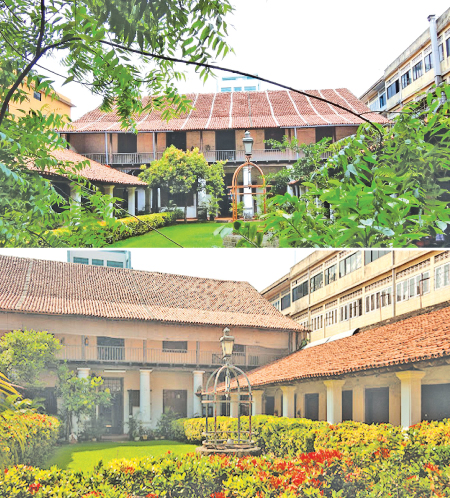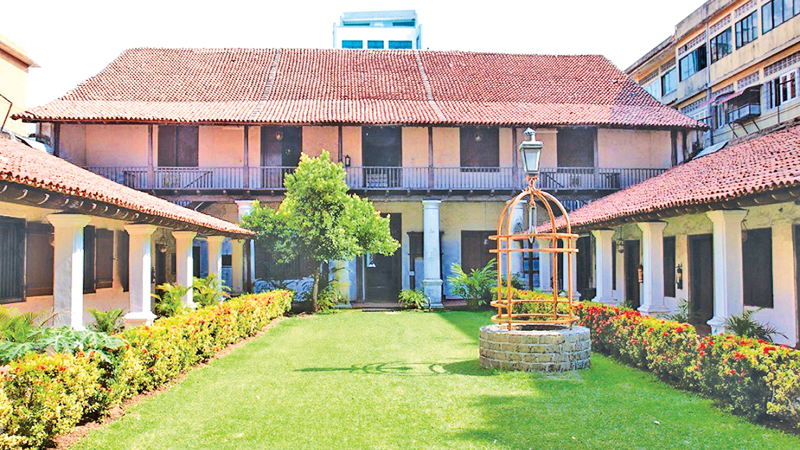Among the museums in Colombo, the Dutch Museum is particularly notable for reminding us of Sri Lanka’s Dutch colonial era. While many visit the Colombo National Museum, only a few make their way to the Dutch Museum, located in the densely built-up area of Pettah, Colombo.
It is not difficult for a visitor to find this museum when walking along Prince Street. Unlike in the past, today, the Colombo Fort is surrounded by crowded, narrow, and often dirty shopping streets, with antique shops and market stalls scattered everywhere. The area is so congested that driving a vehicle through these narrow streets or lanes can be quite challenging. Although entrance to the museum was free in the past, a small fee is now charged to enter the building. The two-storey building that houses the museum is a beautifully preserved 17th-century structure built in the Dutch colonial architectural style.
 Constructed during the Dutch occupation of Colombo (1656–1796), the old building has been fully restored and was opened to the public in 1982. Its ornate wooden doors, large windows, and terracotta floors reflect the Dutch architectural style.
Constructed during the Dutch occupation of Colombo (1656–1796), the old building has been fully restored and was opened to the public in 1982. Its ornate wooden doors, large windows, and terracotta floors reflect the Dutch architectural style.
During that period, the building served many different purposes. It is said that it was used as the official residence of Dutch East India Company Governor Van Rhee during his term of office from 1692 to 1697.
Lush greenery
As you enter the museum premises, you are greeted by a nicely maintained courtyard adorned with lush greenery. This courtyard was once a place of relaxation for Dutch officials. The serene space, with its cool shade and tranquil atmosphere, is indeed a welcome retreat from the noise and heat of the city.
Though the Dutch Museum does not display as many artefacts as other museums, it still effectively showcases the Dutch legacy with items such as furniture, ceramics, coins, and weaponry, portraying various aspects of contemporary life and culture.
You can see a few weapons from that period, including swords, cannons, pistols, and daggers. Among the items on display are intricately carved furniture pieces such as chairs, tables, almirahs, and sofas, all made from valuable timber. The museum also features many historical documents and portraits dating back to the Dutch colonial period.
VOC relics
One of the museum’s most fascinating exhibits is the display of Dutch East India Company (VOC) relics, including navigational instruments, maps, and trade documents. These items illustrate the significant role the VOC played in shaping the island’s history. The Dutch-era furniture showcases the craftsmanship and design aesthetics of the time.
The museum also preserves the Dutch Governor’s living quarters, allowing visitors to see how the Dutch elite lived during their time in Ceylon. The rooms are furnished with period pieces, offering insights into the domestic life of colonial rulers.
Old gravestones dating back to the Dutch period are also on display at the back of the main building. These tombstones were unearthed during excavations at the site of the present Pettah police station.
Anyone interested in learning about the colonial history of old Ceylon can purchase history books available for sale at the museum. However, taking photographs and videoing of the artefacts are not permitted.









